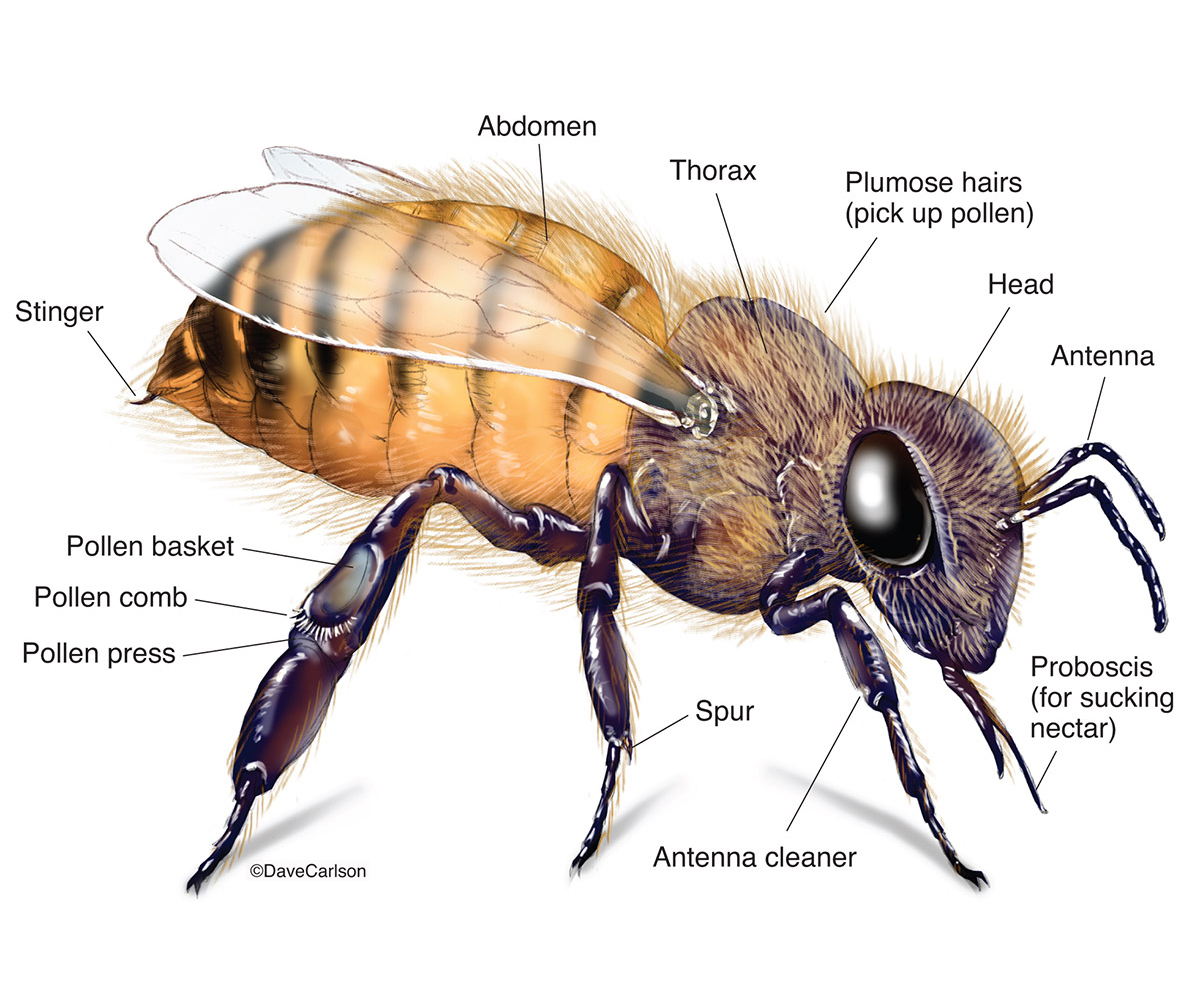
Honeybee Genus Apis Carlson Stock Art
The bee will use it by flattening the foot to press the empodia to the surface. A sticky substance is produced by glands beside the empodia to keep the bee from falling. When the bee is back on stable ground, it retracts the empodia. Stinger. The stinger is the part of a bee's anatomy most people are familiar with—and afraid of!
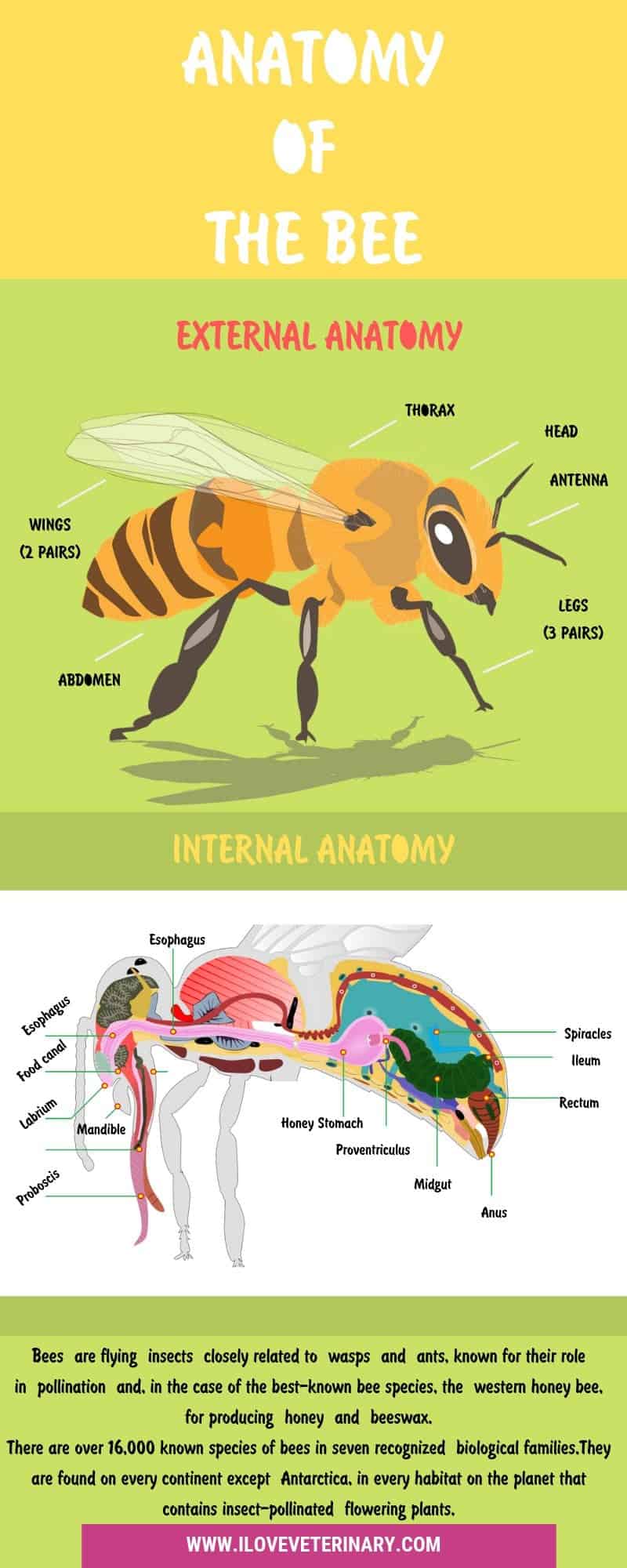
Anatomy of the bee I Love Veterinary
Honey bee anatomy features five unique characteristics to help tell them apart from other insects. Exoskeleton - an outer shell that keeps the body protected. 3 primary body parts - the head, thorax, and abdomen are easy to distinguish from other body parts. 2 large antennae - both attached to their head.

Anatomy Of Bee Educational Labeled Body Structure Scheme Vector Illustration Stock Vector By
Anatomy of the Honey Bee. Like all insects, the honey bee is made up of three major segments: head, thorax, and abdomen. As a member of the insect class (Insecta), honey bees share with other insects the following characteristics. Honey bees are segmented in nearly all their body parts: three segments of thorax, six visible segments of abdomen.

Parts of a BEE Useful Bee Anatomy with Pictures • 7ESL
1. Antennae. The antennae of a bee are located on each side of the upper portion of the head and are made up of a number of segments. They act as mechanoreceptors and odor receptors. Bees use their antennae to locate food sources, communicate with other bees, and navigate their way back to the hive.

a diagram showing the parts of a worker bee
The wax produced by the bees is a complex mixture of various substances, including fatty acids, hydrocarbons, and esters. This mixture gives the wax its unique properties, making it both pliable and durable. The bees use the wax to construct the honeycomb, providing a structure for storing honey, pollen, and brood.
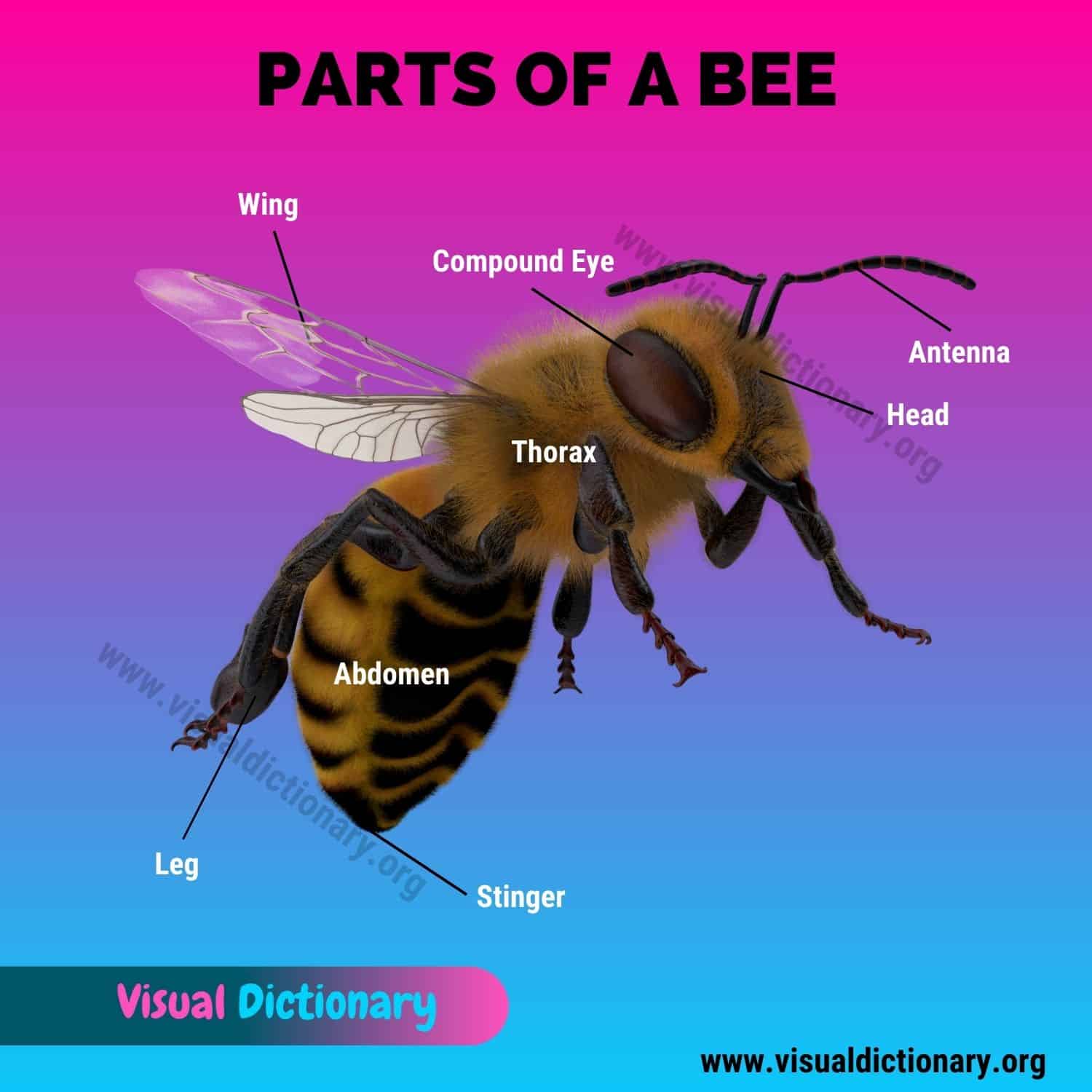
Bee Anatomy Useful List of 14 Body Parts of A Honey Bee Visual Dictionary
A bee's body is also covered in lots of fuzzy, branched hair, which collects pollen and helps regulate body temperature. The body also has three sections -- the head, the thorax and the abdomen. The head houses the brain, a collection of about 950,000 neurons. These neurons are specialized, and they communicate with specific neighboring neurons.
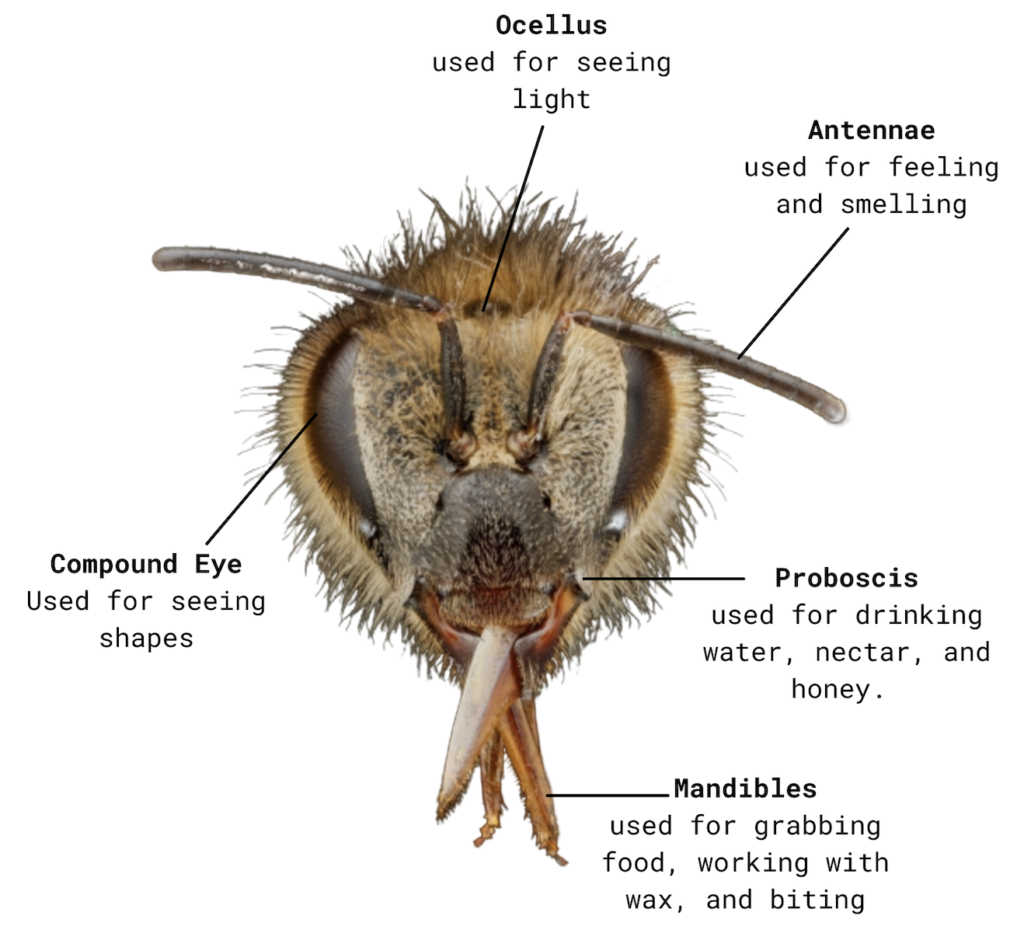
Honey Bee Anatomy Honey Bee Research Centre
Queen Bee Anatomy. Queen bees are the mothers of all bees in a hive. They stay inside the hive and rely on the worker bees to bring them nectar, pollen, and water throughout their lifetime. The queen bee's job is to lay eggs for new generations of worker bees and drones (male honeybees). The queen will lay up to 3,000 eggs per day.

Honey Bee Anatomy Ask A Biologist
The glandular system of a honey bee has four basic functions: (1) internal (within the body) and external (outside the body) communication, (2) food processing, (3) defense and (4) wax production. The glandular system includes a number of glands located throughout the bee's body. These glands are organs composed of clusters of cells that.
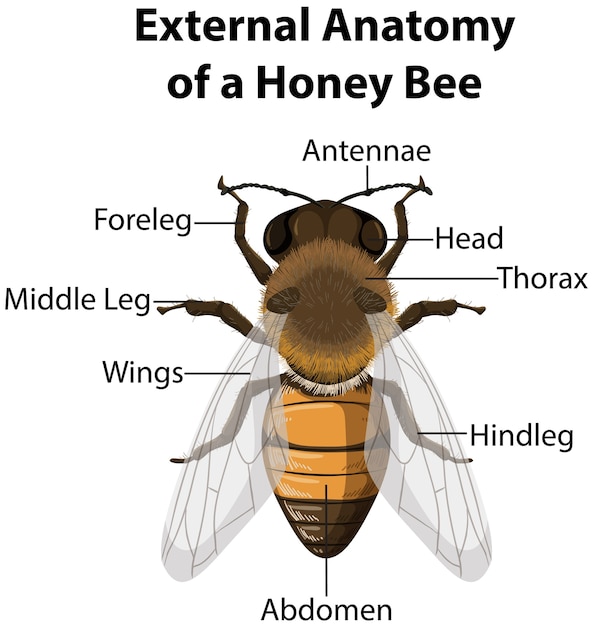
Free Vector External anatomy of a honey bee on white background
A honey bee is made up of an abdomen, thorax, and head that has two antennae. It also has two pairs of wings and three pairs of legs for movement. Like most insects, bees have a hard outer shell or exoskeleton. Let's take a closer look at the parts of a honey bee. 1.

Honey Bee Anatomy Honey Bees The sweetest pollinators on Earth
First published in 1956, this classic work on the anatomy of honey bee by R. (Robert) E. Snodgrass is acclaimed as much for the author's remarkably detailed line drawings of the various body parts and organs of his subject as for his authoritative knowledge of entomology and the engaging prose style with which he conveys it. This book should be in the library of every student of the honey bee.
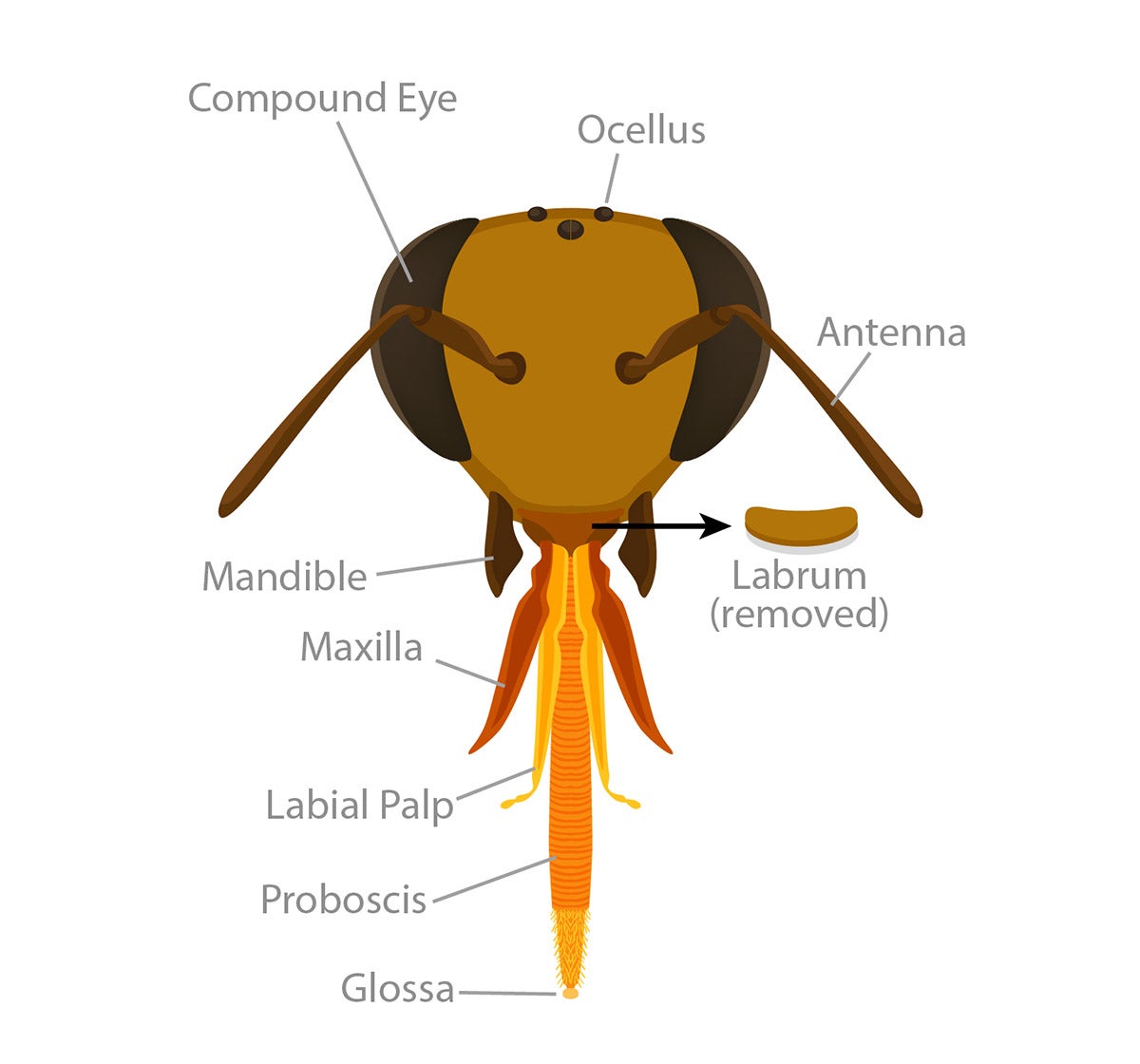
Honey Bee Anatomy Ask A Biologist
Honey bee anatomy. Zachary Huang 02/20/2021 Leave a Comment on Honey bee anatomy. 1. Head. The head is the center of information gathering. It is here that the visual, gustatory and olfactory inputs are received and processed. Of course, food is also input from here.Important organs on or inside the head: 1. Antennae, 2.

Honey Bee Anatomy Ask A Biologist
The honey bee, though small in size, is a complex and sophisticated creature. This is an insect perfectly adapted to its environment, enabling it to co-exist with other living things in a delicately balanced give-and-take, evolved over millions of years. The anatomy of the bee has a stunning efficiency. With honey bee anatomy, every element has.
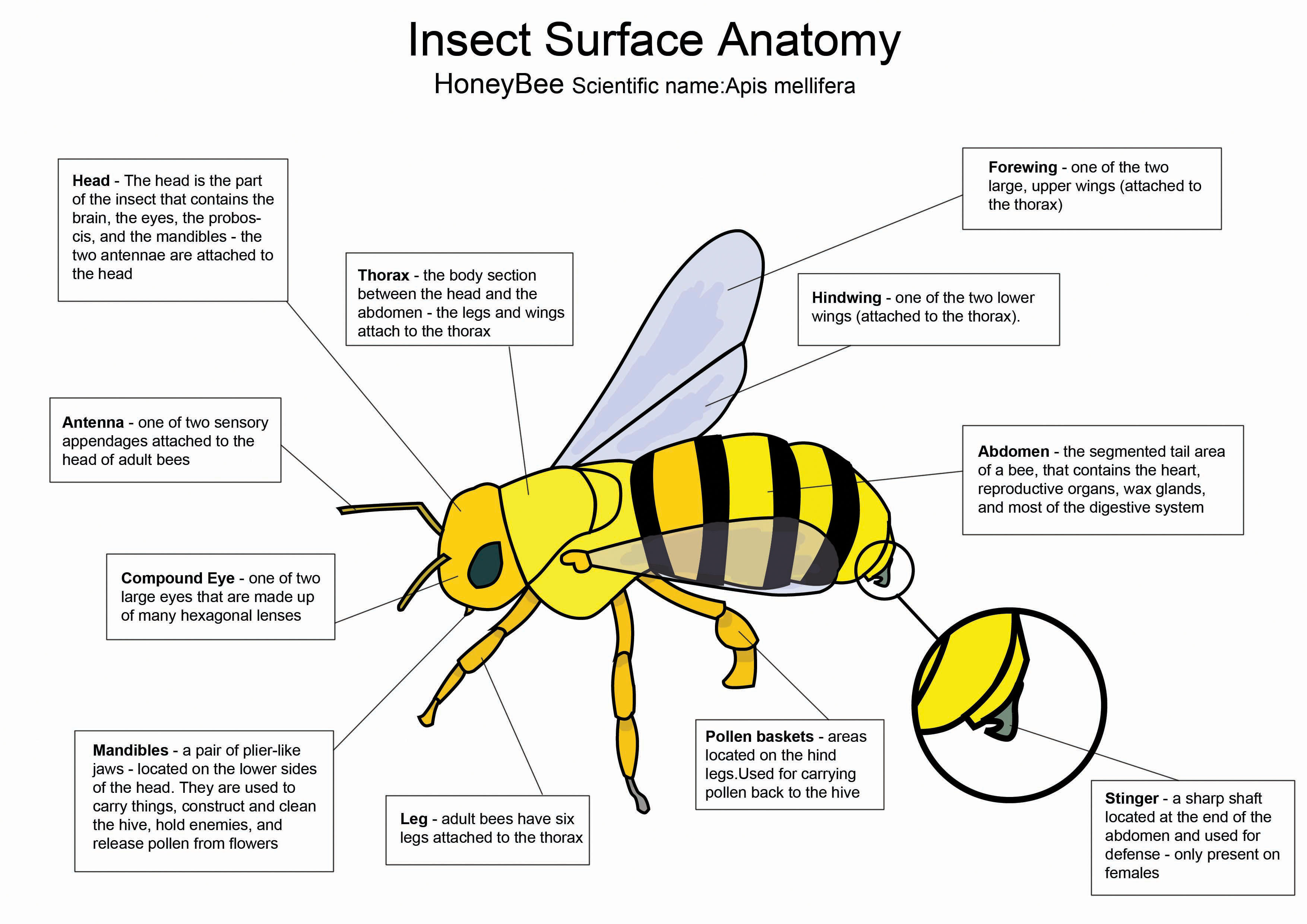
Honey Bee diagram by crazyhobo on DeviantArt
Studying honey bee anatomy is a great way to teach students how to analyze anatomical illustrations. Arizona State University's School of Life Sciences provides clear illustrations of both interior and exterior anatomy. Primary grade teachers might focus on the most basic parts, such as head, thorax, and abdomen.
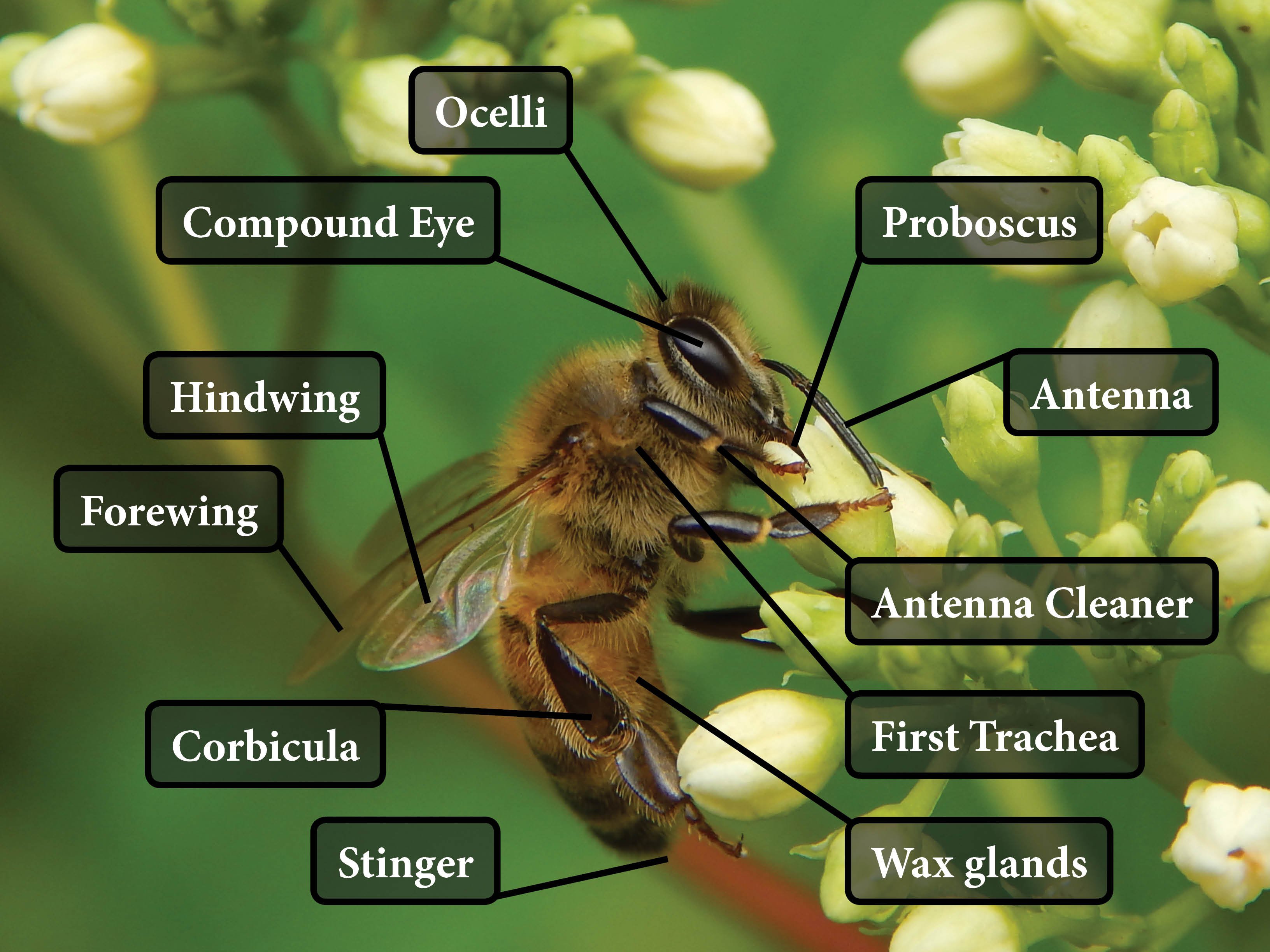
Lesson 2.2 Honey Bee Anatomy Honey Glen
Bee Anatomy Honey bees are insects and have five characteristics that are common to most insects. They have a hard outer shell called an exoskeleton. They have three main body parts: head, thorax, abdomen. They have a pair of antennae that are attached to their head. They have three pairs of legs used for walking. They have two pairs of wings.
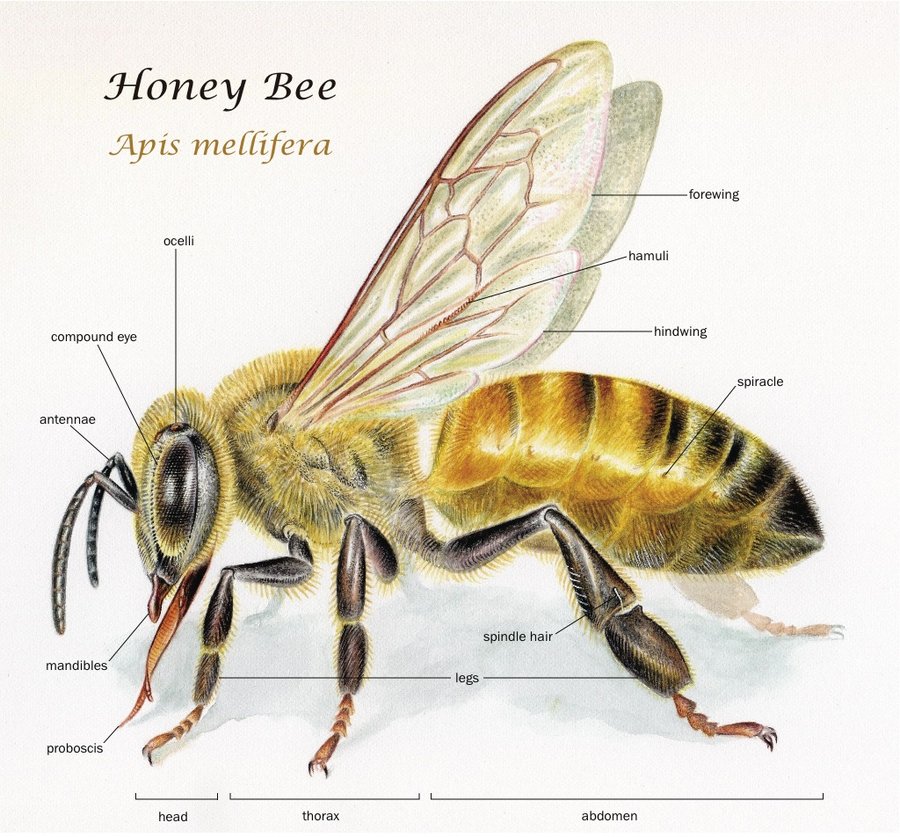
Body parts of a bee. The worker bee.Discover the benefits of honey
A lot of action takes place within this part of bee anatomy. Containing 3 pair of legs ( total of 6 ) and 2 pair of wings (total of 4) , walking, flying and moving in general is made possible by the structure of the thorax. wings; legs; special structures - pollen basket; Honey Bee Wings. A honey bee has 4 wings ( 2 pair on each side of the.
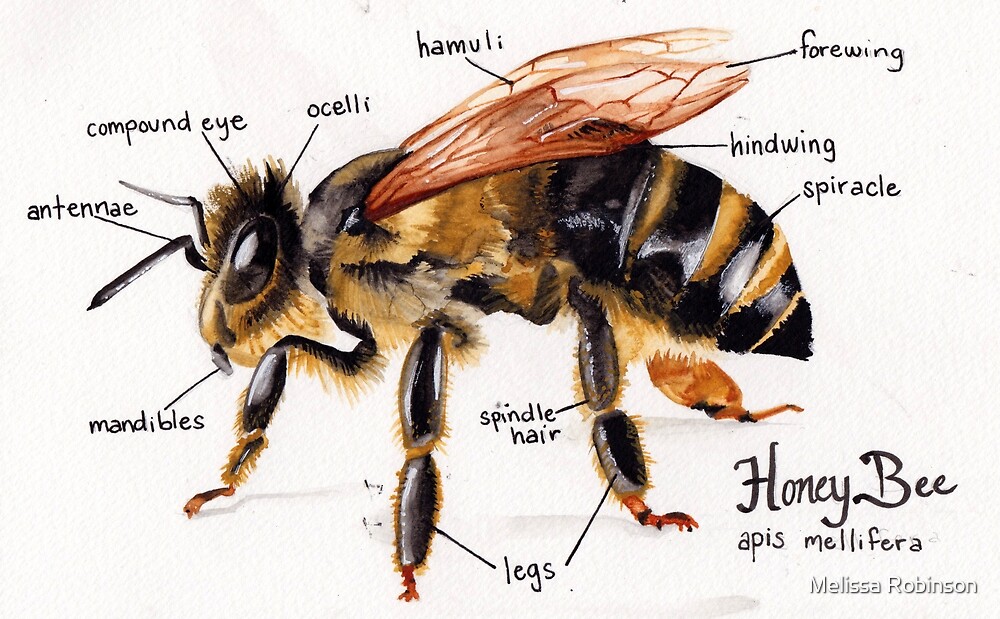
"Honey Bee Anatomy Chart" by Melissa Robinson Redbubble
Honey Bee Anatomy. Honey bees have 3 body segments - head, thorax, and abdomen. The head contains the eyes , antennae, and mouthparts. Eyes: Honey bees have 5 eyes. 2 compound eyes used for seeing shapes, and 3 small eyes at the top of the head used for seeing light. Honey bees see slightly differently than humans do.